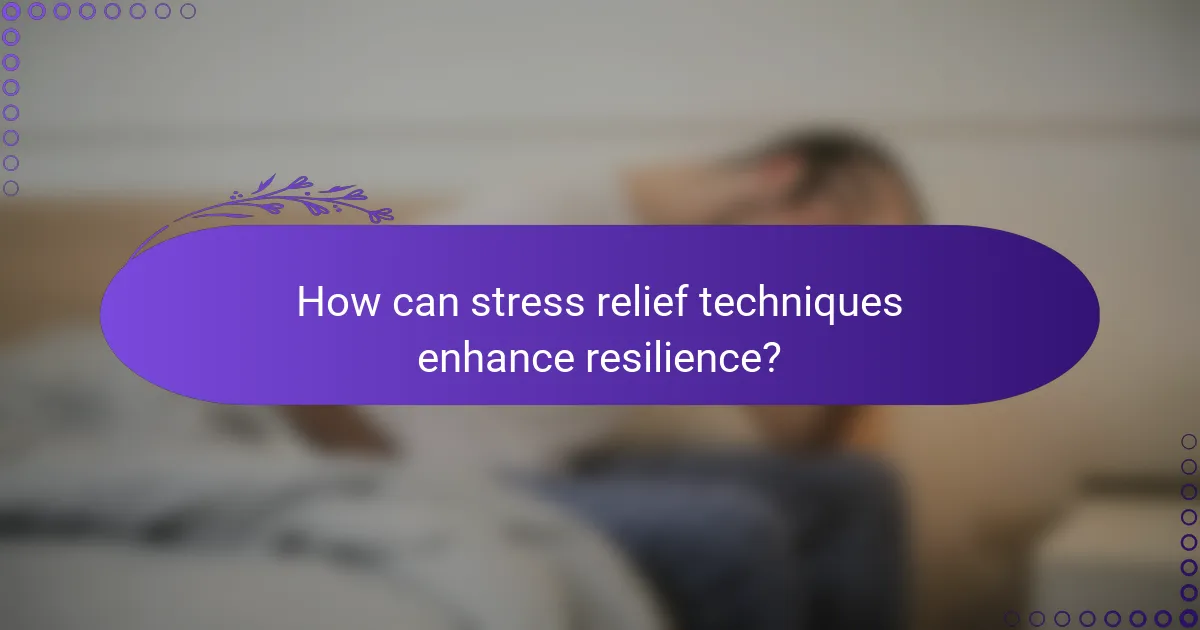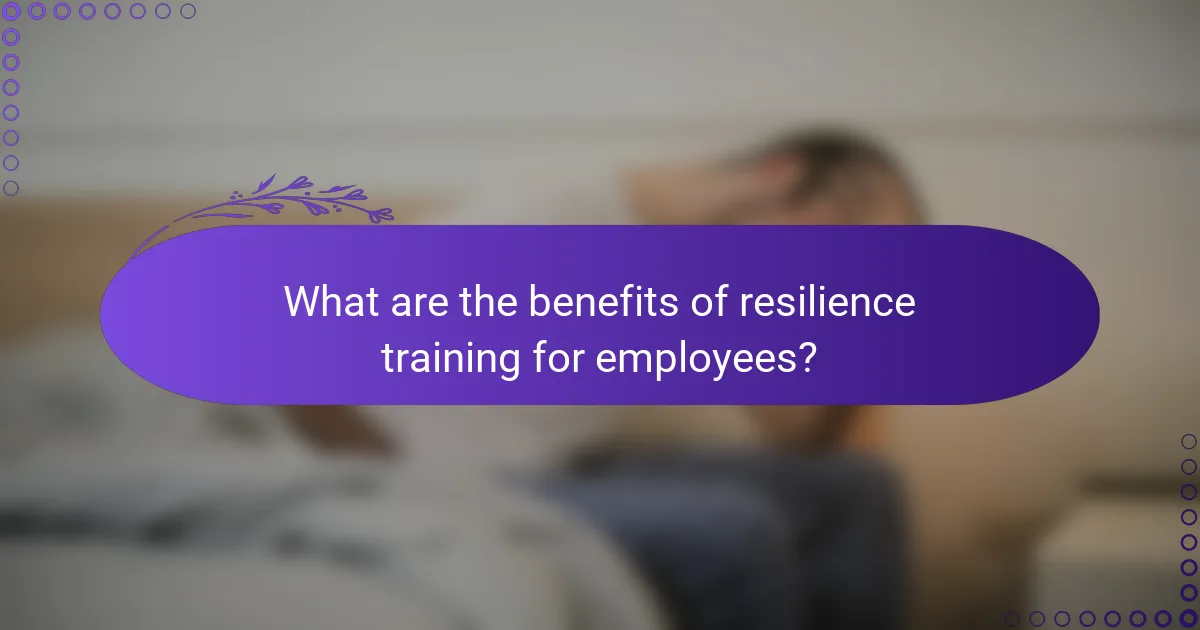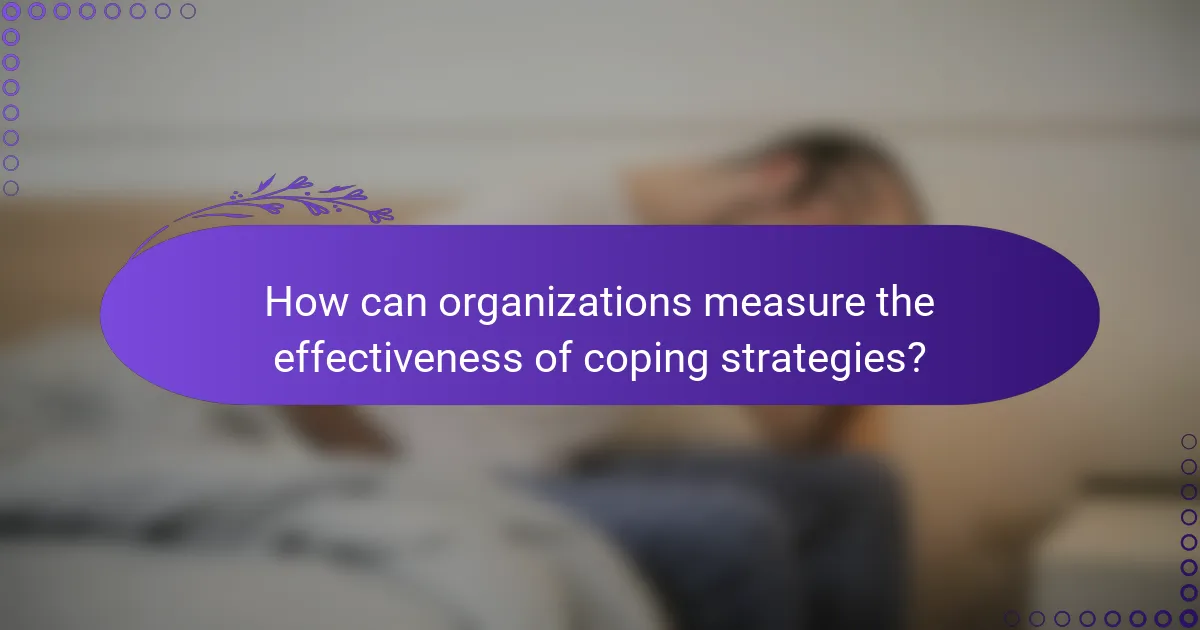In today’s fast-paced work environment, effective coping strategies are essential for enhancing employee well-being and resilience. By focusing on flexibility, collaboration, and a positive workplace culture, organizations can create an atmosphere that promotes stress relief and boosts job satisfaction. Implementing these strategies not only helps individuals manage immediate stress but also prepares them to face future challenges with greater confidence.

What coping strategies can improve work environment in New York?
Coping strategies that enhance the work environment in New York focus on flexibility, collaboration, and employee well-being. Implementing these strategies can lead to increased job satisfaction and productivity, helping employees manage stress effectively.
Flexible work hours
Flexible work hours allow employees to choose their start and end times, accommodating personal commitments and peak productivity periods. This approach can reduce stress and improve work-life balance, which is particularly beneficial in a fast-paced city like New York.
Employers should consider offering core hours where all employees are expected to be present, while allowing flexibility outside of these times. For example, a schedule from 10 AM to 4 PM as core hours can provide structure while still accommodating individual preferences.
Remote work options
Remote work options enable employees to perform their tasks from home or other locations, reducing commute times and increasing comfort. This flexibility can lead to higher job satisfaction and lower stress levels, especially in a city known for its congestion.
Employers should establish clear guidelines for remote work, including communication expectations and performance metrics. Regular check-ins can help maintain team cohesion and ensure accountability while allowing for the benefits of remote arrangements.
Collaborative spaces
Collaborative spaces are designed to foster teamwork and creativity, providing areas where employees can gather to brainstorm and share ideas. These spaces can enhance communication and collaboration, which are essential in a diverse work environment like New York.
When designing collaborative spaces, consider incorporating comfortable seating, whiteboards, and technology for presentations. Encouraging a mix of formal and informal areas can help stimulate creativity and improve team dynamics.
Employee wellness programs
Employee wellness programs focus on promoting physical and mental health, offering resources such as fitness classes, counseling services, and stress management workshops. These initiatives can significantly reduce workplace stress and enhance overall well-being.
Organizations should tailor wellness programs to meet the specific needs of their workforce, considering factors like age and job roles. Regular surveys can help identify what employees value most, ensuring that the programs remain relevant and effective.

How can stress relief techniques enhance resilience?
Stress relief techniques can significantly enhance resilience by equipping individuals with tools to manage stress effectively. These practices not only reduce immediate stress but also foster a mindset that allows for better coping with future challenges.
Meditation and mindfulness
Meditation and mindfulness practices help individuals focus on the present moment, reducing anxiety and promoting emotional stability. Regular engagement in these techniques can lead to improved mental clarity and a greater sense of control over one’s thoughts and feelings.
To get started, set aside just a few minutes each day for meditation or mindfulness exercises. Apps like Headspace or Calm can guide beginners through simple practices. Aim for consistency, even if it’s just five to ten minutes daily.
Physical exercise routines
Regular physical exercise is a powerful stress relief technique that boosts resilience by releasing endorphins, which are natural mood lifters. Engaging in activities such as walking, running, or yoga can help clear the mind and improve overall well-being.
Try to incorporate at least 150 minutes of moderate aerobic activity each week, such as brisk walking or cycling. Additionally, strength training exercises twice a week can further enhance physical and mental resilience.
Time management skills
Effective time management skills are crucial for reducing stress and building resilience. By prioritizing tasks and setting realistic deadlines, individuals can avoid feeling overwhelmed and maintain a sense of accomplishment.
Consider using tools like to-do lists or digital planners to organize daily tasks. Break larger projects into smaller, manageable steps, and allocate specific time blocks for each task. This approach can help maintain focus and reduce procrastination.

What role does workplace culture play in stress management?
Workplace culture significantly influences stress management by shaping employee interactions and overall job satisfaction. A positive culture fosters an environment where employees feel valued, supported, and engaged, which can reduce stress levels and enhance resilience.
Open communication channels
Open communication channels are essential for effective stress management in the workplace. When employees can freely express their concerns and ideas, it promotes transparency and trust. Regular check-ins, feedback sessions, and suggestion boxes can facilitate this openness.
Encouraging a culture where employees feel safe to voice their thoughts can lead to quicker resolutions of issues, reducing stress. For instance, implementing weekly team meetings can help identify and address potential stressors early.
Supportive leadership
Supportive leadership plays a crucial role in managing workplace stress. Leaders who demonstrate empathy and provide guidance can significantly impact employee morale and resilience. Training managers to recognize signs of stress and respond appropriately can create a more supportive environment.
Leaders should also encourage work-life balance by promoting flexible schedules or remote work options, which can help employees manage their personal and professional responsibilities more effectively. This approach can lead to increased job satisfaction and reduced burnout.
Team-building activities
Team-building activities are effective for reducing stress and enhancing workplace culture. These activities foster collaboration and strengthen relationships among team members, which can alleviate feelings of isolation and stress. Regularly scheduled team outings or workshops can provide a break from routine and build camaraderie.
Consider incorporating a mix of fun and skill-building activities, such as problem-solving challenges or outdoor retreats. These can help employees bond while also developing skills that improve teamwork and communication, further reducing stress in the workplace.

What are the benefits of resilience training for employees?
Resilience training equips employees with skills to handle stress, adapt to change, and recover from setbacks, leading to a healthier work environment. This training fosters a culture of support and well-being, ultimately benefiting both individuals and organizations.
Improved mental health
Resilience training significantly enhances mental health by teaching employees coping strategies to manage stress and anxiety. Participants learn techniques such as mindfulness and cognitive restructuring, which help them maintain a positive outlook even during challenging times.
By fostering a supportive atmosphere, organizations can reduce the stigma around mental health issues, encouraging employees to seek help when needed. This proactive approach can lead to lower rates of burnout and absenteeism.
Increased productivity
Employees who undergo resilience training often experience increased productivity as they develop better stress management skills. When workers can effectively cope with challenges, they are more focused and engaged in their tasks, leading to higher output.
Additionally, resilient employees are less likely to be distracted by personal issues, allowing them to maintain consistent performance. Organizations may see improvements in team collaboration and overall morale, further boosting productivity levels.
Enhanced problem-solving skills
Resilience training enhances problem-solving skills by encouraging employees to approach challenges with a constructive mindset. Participants learn to view setbacks as opportunities for growth, which fosters creativity and innovation in finding solutions.
Moreover, training often includes group activities that promote collaboration, allowing employees to share diverse perspectives. This collective problem-solving approach can lead to more effective and efficient outcomes, benefiting the entire organization.

How can organizations measure the effectiveness of coping strategies?
Organizations can measure the effectiveness of coping strategies by utilizing various assessment tools that capture employee experiences and performance outcomes. This includes gathering direct feedback from employees and analyzing performance metrics to identify trends and areas for improvement.
Employee feedback surveys
Employee feedback surveys are a direct method for organizations to gauge the effectiveness of coping strategies. These surveys can include questions about stress levels, job satisfaction, and the perceived usefulness of available resources. Regularly conducting these surveys, perhaps quarterly, allows organizations to track changes over time and adjust strategies as needed.
When designing surveys, consider using a mix of quantitative and qualitative questions. For example, a scale from 1 to 5 can quantify satisfaction, while open-ended questions can provide insights into specific issues employees face. This combination can help organizations understand the nuances behind the numbers.
Performance metrics analysis
Analyzing performance metrics is another effective way to measure coping strategy effectiveness. Key performance indicators (KPIs) such as productivity rates, absenteeism, and employee turnover can reveal how well coping strategies are working. For instance, a significant drop in absenteeism after implementing a new stress management program may indicate its success.
Organizations should regularly review these metrics and compare them against industry benchmarks. This can help identify whether improvements are consistent with broader trends or unique to the organization. Additionally, consider integrating qualitative data from employee surveys to provide context to the numbers, ensuring a comprehensive understanding of the impact of coping strategies.

What are the best practices for implementing stress relief programs?
Effective stress relief programs in the workplace focus on creating a supportive environment that promotes mental well-being. Key practices include regular engagement activities and providing access to mental health resources tailored to employee needs.
Regular workshops and seminars
Hosting regular workshops and seminars can significantly enhance stress relief efforts by educating employees about stress management techniques. These sessions can cover topics such as mindfulness, time management, and work-life balance.
Consider scheduling these events monthly or quarterly to maintain engagement. Inviting external experts can provide fresh perspectives and practical tools that employees can apply in their daily routines.
Access to mental health resources
Providing access to mental health resources is crucial for supporting employee well-being. This can include offering an Employee Assistance Program (EAP), which typically provides confidential counseling services and resources for stress management.
Employers should ensure that employees are aware of these resources and encourage their use. Regularly promoting mental health days and workshops can help destigmatize seeking help and foster a culture of openness regarding mental health issues.


